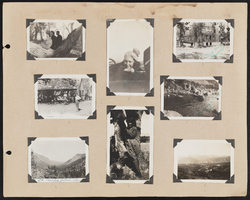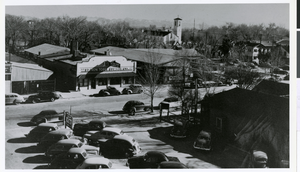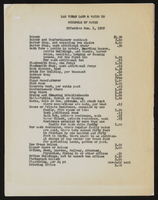Search the Special Collections and Archives Portal
Search Results
Ella Earl Carruth Photograph Collection
Identifier
Abstract
The Ella Earl Carruth Photograph Collection contains photographs depicting Mormon settlers in Nevada from 1906 to 1934. The materials include photographs of the Mormon Fort in present-day Las Vegas, Nevada, the town of Bunkerville, Nevada, and Mormon pioneers Edward Bunker, Joseph Ira Earl, and Zilpha Earl.
Archival Collection
Alger, Earl, 1933-
Earl Alger was born in the early 1930s in Las Vegas, Nevada. He married Gloria (Hicks) Alger after meeting in the Mormon church.
Person

Southern Nevada Photo Album, image 068
Description

Photograph of the Ed Von Tobel Lumber Company, February 14, 1949
Date
Archival Collection
Description
Image
Stephen Nasser Papers
Identifier
Abstract
The Stephen Nasser Papers (1992-2018) mainly contain letters written from school children to Nasser who travels to schools, churches, and organizations around Las Vegas, Nevada to share his story of surviving the Holocaust during World War II. Materials in this collection document his captivity in various prison camps and includes photographs, awards, and newspaper clippings. Also included are speeches given by Nasser and book reviews and a teacher's guide of his book My Brother's Voice written by students of Dixie College, St. George, Utah. This collection includes a copy of
Archival Collection
Viola Johnson oral history interview
Identifier
Abstract
Oral history interview with Viola Johnson conducted by Claytee D. White on March 03, 1996 for the Women's Research Institute of Nevada (WRIN) Las Vegas Women Oral History Project. Johnson discusses leaving Fordyce, Arkansas in 1942 to join her parents in Las Vegas, Nevada where her first home was a tent. Johnson goes on to discuss life with her parents in Las Vegas including their work and church activities. Johnson also describes her work at the Flamingo Hilton and Sands Hotel and Casino as a maid, and at the Riviera Hotel and Casino making sandwiches. Finally, Johnson talks about labor conditions and the Culinary Union during the early years of the Las Vegas Strip casino development.
Archival Collection




